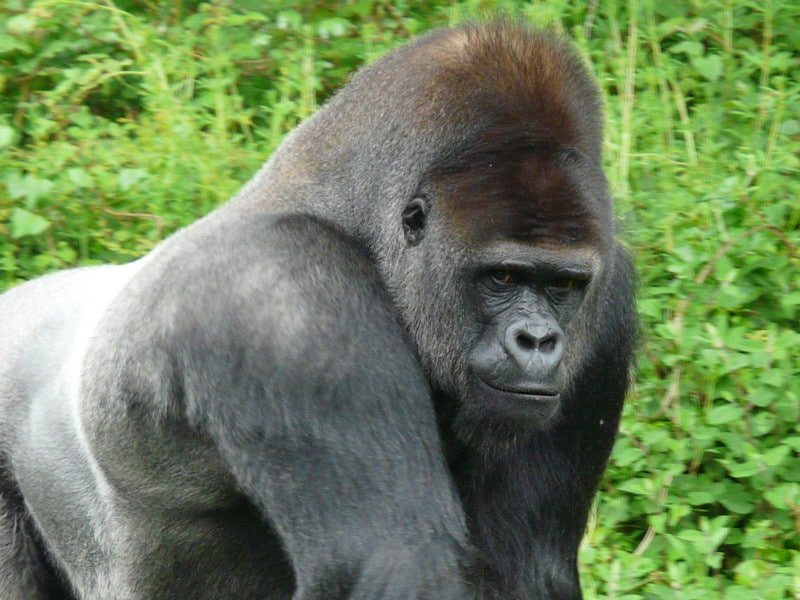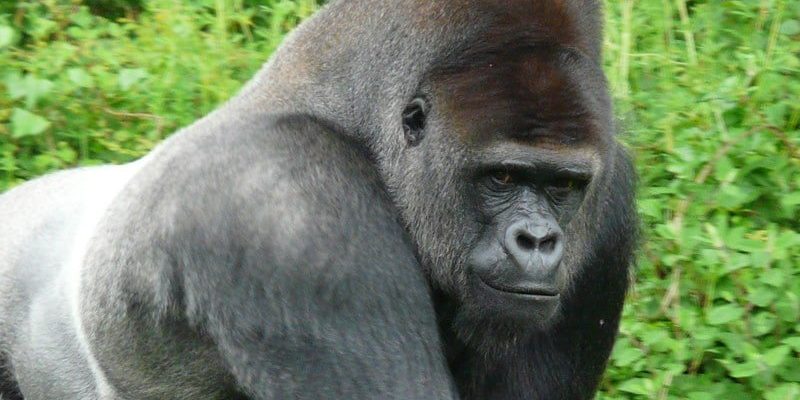
Imagine discussing a new movie with a friend who’s heard all the wrong reviews. They might think the film is horrible, while you know it has touching moments that deserve appreciation. That’s kind of what happens with Western Gorillas. The myths surrounding them can overshadow their actual behaviors and characteristics, leading to misunderstandings about their nature and needs.
This article dives into the most common myths and misconceptions about the Western Gorilla and sheds light on the realities of these magnificent creatures. Let’s clear up some of that confusion and discover what makes the Western Gorilla not only unique but also crucial to our planet’s ecosystem.
Myth 1: Western Gorillas Are Aggressive Creatures
One of the biggest misconceptions is that Western Gorillas are dangerous and prone to aggression. Most people picture them as the fierce beasts you might see in action movies. However, **here’s the thing**: these animals are actually quite peaceful and shy.
In reality, Western Gorillas prefer to avoid conflict. They communicate through gentle gestures, body language, and soft vocalizations. When threatened, they usually choose to flee rather than fight. For example, a Silverback, the dominant male of the group, will display strength through physical presence but uses his size primarily to protect his family, not to attack. Their real strength lies in their ability to create harmonious social structures within their groups.
It’s crucial to understand that when they do show aggression, it’s often due to fear or a desire to protect their young. It’s a natural instinct, just like in many other species, including humans.
Myth 2: Western Gorillas Are Solitary Animals
Another common myth is that Western Gorillas prefer solitude. Picture a lone wolf howling at the moon, and you might envision a gorilla living in isolation. But the truth is quite the opposite.
Western Gorillas are social animals with a strong sense of community. They live in family groups called troops, which typically consist of one dominant Silverback, several females, and their offspring. This social structure is essential for their survival. The Silverback not only protects the troop but also leads them to food sources.
Being part of a troop helps Western Gorillas develop strong bonds, communicate effectively, and share parenting responsibilities. Just like how we lean on family and friends for support, gorillas rely on their troops for protection and social interaction.
Myth 3: Western Gorillas Are Just Like Other Gorilla Species
You might think all gorillas are pretty much the same, right? Well, not exactly. Western Gorillas have unique characteristics that set them apart from their Eastern counterparts.
For instance, Western Gorillas are generally smaller and have distinct physical traits. They tend to have a more rounded skull and a shorter snout compared to Eastern Gorillas. These differences may seem minor, but they play a role in how each species has adapted to their environments.
Additionally, their habitats vary significantly. While Eastern Gorillas are usually found in dense, mountainous rainforests, Western Gorillas are more commonly found in lowland areas, swamps, and forests. These variations are essential for understanding their behaviors and habitat needs.
Myth 4: Western Gorillas Are Strictly Herbivores
You might think that Western Gorillas only munch on leaves and vegetables. While it’s true that their diet is primarily plant-based, it’s not as simple as it sounds.
Western Gorillas eat a wide variety of foods, including fruits, seeds, and even the occasional insect. Yes, you read that right! Insects, like ants and termites, can be a protein-rich snack for these gorillas. They have a diverse diet because it helps them adapt to changing environments and ensures they get all the nutrients they need to thrive.
Imagine going to a buffet – why settle for just salad when you can sample a bit of everything? That’s how these gorillas approach their meals, making them quite versatile foragers in their natural habitats.
Myth 5: Western Gorillas Have No Emotions
One of the more harmful misconceptions is that Western Gorillas lack emotional depth. Some might think they move through life like robots, without feelings or attachments. This couldn’t be further from the truth.
Studies have shown that gorillas, including Western Gorillas, exhibit a wide range of emotions, from joy and playfulness to sorrow and compassion. They form strong bonds with their family members and display behaviors such as hugging, grooming, and even comforting one another during stressful times.
Imagine sharing a laugh with a friend or comforting someone in need. Western Gorillas have similar emotional connections within their groups. For instance, when a baby gorilla is scared, its mother will quickly scoop it up and reassure it with gentle touches, showing that they have a strong sense of care and empathy.
Myth 6: Western Gorillas Are Unintelligent
Finally, let’s touch on the myth that Western Gorillas aren’t smart. This misconception often plays into the stereotype of them being just big animals with brute strength. But let me explain: these creatures are incredibly intelligent and resourceful.
Western Gorillas have shown problem-solving abilities and even use tools. They can use sticks to extract termites or break branches for food. This tool use is a reflection of their creativity and adaptability in the wild.
Furthermore, they exhibit complex social behaviors, like learning from one another and passing down knowledge within their troops. If that doesn’t show intelligence, I don’t know what does! It’s a reminder that wisdom can come from the most unexpected places.
Understanding the **Western Gorilla** is essential for their conservation and our appreciation of these remarkable creatures. By debunking common myths and misconceptions, we can foster a deeper respect for their nature and the vital roles they play in their ecosystems.
These gentle giants are not just big and strong; they’re social, emotional, and surprisingly adaptable. Next time you think of a gorilla, remember the real story behind those powerful figures—tales of family bonds, emotional depth, and a critical role in our world. Let’s keep the conversation going, advocating for the preservation of their habitats and ensuring a future where Western Gorillas can thrive.

